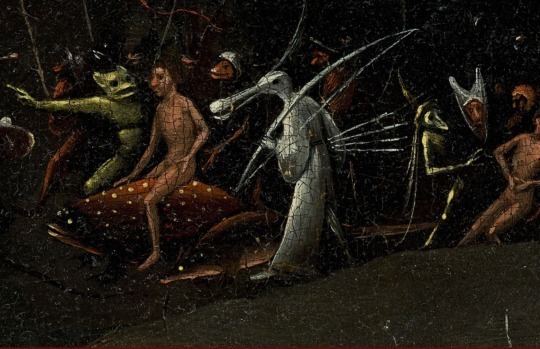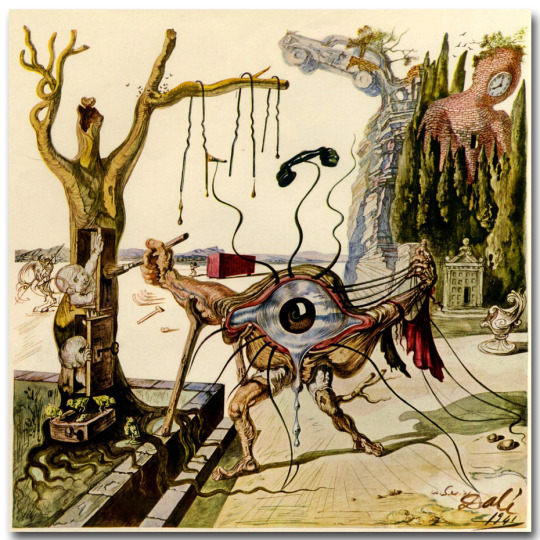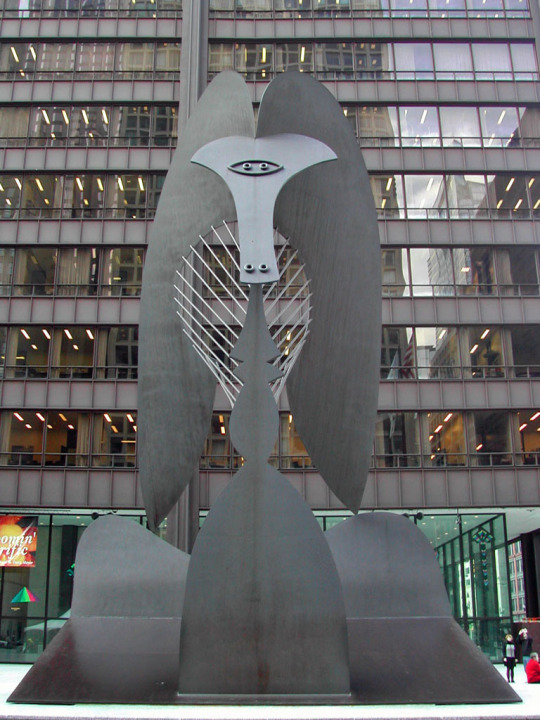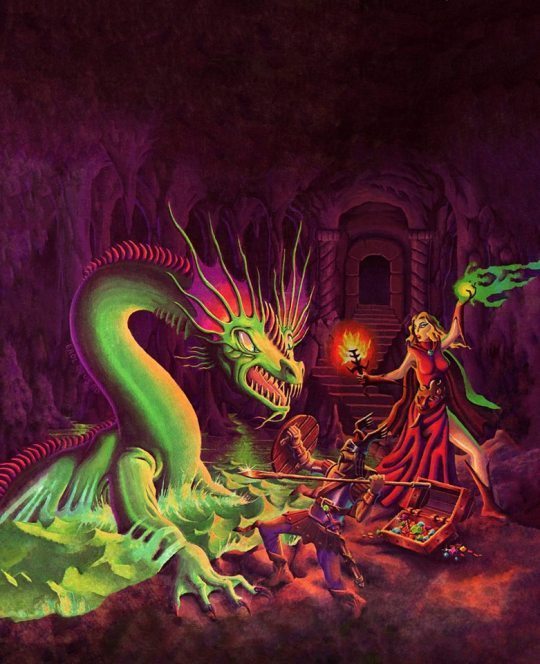#also like. the song has stone and dust imagery. gardens and trees.
Text
the mighty nein - critical role
this is a place where i don't feel alone.
this is a place where i feel at home.
#also with softer vibes. i offer They#every silly little brainheart found family deserves a to build a home edit#the mighty nein maybe most of all. thats my family#also the lyrics deliciously well suited to m9.#when jester pulls that. stupid tarot card for fjord. home or traveler. and there's a carnival wagon. and veth says Thats Us! . them#i just think about . the tower is their home the xhorhouse is their home the lavish chateau is their home the balleater. the mistake.#the nein heroez. veth and yezas apartment. the dome. fjord and jesters living room floor.#a bar with a silly name on rumblecusp#also like. the song has stone and dust imagery. gardens and trees.#the inherent temporality of life and love and how that holds no bearing on how greatly people can love. im losin it okay.#ive been making this edit for days straight with my computer screaming at me for trying to shove 143 episodes of cr into a 2min20sec video.#crying becuase. theyre a family do you get it. they were nine lonely people and most of them had given up on seeing their own lives#as something that might be good. something that might make the world a better place. and in the end they're heroes.#and it doesn't matter if no one else knows because They know they're heroes. and they wouldn't've believed that was true when they met.#rattling the bars of my enclosure. to be loved is to be changed#posted on twitter and want to get in the habit of posting here too bc.#general reasons but also bc . i have noticed some of the ppl liking/sharing it are also ppl who shit on my ops by vaguing about my posts#which is in general whatever but does leave a funny taste in my mouth.#critical role#the mighty nein#cr2#caleb widogast#caduceus clay#jester lavorre#fjord#veth brenatto#yasha nydoorin#beauregard lionett#mollymauk tealeaf#my posts
2K notes
·
View notes
Text
2017: #8-STRANGE MONSTERS FROM ART

Pandora’s Box issues forth a tale each year about monsters in different mediums. We have previously examined monsters in everything from books, to comics, to even songs (see 2016: #6-STRANGE AND DANGEROUS MONSTERS FROM BOOKS, 2013: #3-STRANGE COMIC BOOK MONSTERS, and 2014: #4-STRANGE MONSTERS FROM SONGS). Art, specifically paintings, woodcuts, and statues, offer a wealth of monstrous possibilities. Horror specifically about art is best seen with Rod Serling’s The Night Gallery tv series which was about spooky paintings which each told a tale. Ray Bradbury’s book and film, The Illustrated Man, was about tattoos that each depicted a future event. Many horror films have paintings with false peek eye holes. Sometimes monsters in paintings come alive such as in the recently released It and the evil nun in The Conjuring 2. The Dark Shadows tv series often featured paintings, from old paintings of unaging vampires to Dorian Gray inspired paintings (see 2016: #7-GUIDE TO DARK SHADOWS). Jack Nicholson as The Joker in 1989’s Batman walked through an art gallery and said, “I don’t know about art, but I know what I like (see 2017: #10-SUPERHEROES).
There is a lot of spooky art perfect for Halloween. The Greeks had artwork of mythological figures, and the Middle Ages presented paintings of Death personified. In 1505, Hieronymous Bosch completed the triptyche, The Garden of Earthly Delights, which features three panels representing the Garden of Eden, the garden of earthly delights, and Hell (see above image). I particularly like the Hell panel, and it is perhaps my favorite painting. There are many monsters and horrors that inhabit Bosch’s landscape of Hell. There are giants rats tearing apart knights, and creeping about are bird-men, fish-men, and even crocodile-men. One particular marching crocodile-man is my favorite figure in the painting, and I would love to know what Bosch would say his story would be (see below).

The painting also includes armies, descending moons, fiery pits, and giant human bodily organs converted into objects including rooms. Similar hellish work to Bosch’s was released in the 1600’s by Jacob Isaacsz. van Swanenburg as seen with his The Harrowing of Hell (see below).

Henry Fuseli’s The Nightmare from 1793 produced a perturbed imp and a demonic horse (see below). Freud kept a reproduction of that painting in his apartment in Vienna.

Perhaps the most recognizable horror-related painting is Edvard Munch’s The Scream (see below). The Scream is a series of four paintings Munch painted between 1893 and 1910. They were inspired by a red sunset that Munch felt like was a scream of nature.

In 1915 the interesting artistic movement of Dadaism developed, and Dadaists created all sorts of odd art demonstrating the absurdity of life. Max Ernst produced a forest of woodcuts and paintings that include chairs entirely made out of human bones, flying god-heads, half-human absurd abominations, and an ominous elephant-like monster in his The Elephant Celebes from 1922 (see below). Ernst spent time as a child with fevers staring at patterns in wood grain, similar to Salvador Dali’s paranoiac-critical method (see 2016: #10-MONSTERS ON THE LOOSE 7).

Dadaism formed into Surrealism, and Dali’s work has all sorts of melting monstrosities, flaming giraffes, and the like. Dali’s Paint-Maker’s Plight from 1941 shows an eyeball humanoid similar to costume’s worn by The Residents (see below and 2012: #1-SPOOKY MUSIC).

In 1954 Francis Bacon painted the dark, Figure with Meat, which features a grotesque pope seated between a grossly bisected cow (see below). In 1989’s Batman, Nicholson’s Joker sees Figure with Meat in the art gallery scene and stops to comment that he likes that one.

In 1967 Picasso’s untitled Chicago statue was dedicated, and it is a monster that most resembles an Afghan Hound (see below). I frequently walk past it, but it sure does not bark or growl; too bad it doesn’t.

Surely the cherry, or bloody bit, on the horror cake is Otto Rapp’s Deterioration of Mind Over Matter from 1973 which features a rotting human head melded with a bird cage (see below).

In the last fifty years there have been many artists that have specialized in painting or drawing monsters. Frank Frazetta created scores of fantasy paintings especially Conan the Barbarian related artwork (see below).

Boris Vallejo still releases sword and sorcery artwork as well artwork depicting superheroes (see below and 2017: #10-SUPERHEROES).

Bob Eggleton, Larry Elmore, and Erol Otus release artwork that is oriented towards Dungeons & Dragons (see below for Erol Otus artwork). Wayne Barlowe has released paintings of aliens, monsters, and even devils. There is so much available art of monsters, that we must mix them all up in the churning cauldron of creepiness and watch the three best monsters crawl out.

Salvador Dali certainly is an artist who can contribute one of the three strangest monsters appearing in art, but which one? He produced artwork more surreal than the world had ever seen. Dali had so many monsters appearing in paintings, it is hard to decide which is his best. His work contains quite a few stretched out or melting people, often just huge heads held up by supports. But those are not monsters. He featured a titan bursting out of our planet in one painting and an elongated black ghost of Vermeer in another. His 1936 painting, Soft Construction with Boiled Beans (Premonition of Civil War) features a large monster that is the definitely the first to bubble out of the cauldron of creepiness (see below). The unnamed monster represents civil war. It is a weird collection of limbs, and seeing it travel through the desert landscape it is painted in would be fascinating. It appears to be dismantling itself or removing its own limbs, and it represents self-destruction.

The second painter identified by the cauldron of creepiness is Ivan Albright. Ivan Albright is a painter who used a very distinctive type of magical realism in his work. His dark paintings show wrinkles upon luminescent wrinkles, cracks, scratches, edges, and the effects of entropy. His work is both disturbing and mesmerizing (see 2016: #3-BLOODY MESMERISM). His incredibly detailed painting, The Door, is almost as large as a full sized door, and it looks like a door to the Outer Limits (see 2017: #3-GUIDE TO THE OUTER LIMITS). But that isn’t a monster. Surely his best artistic contribution to the imagery of monsters is from his 1943 painting, The Picture of Dorian Gray (see below). This painting was commissioned for the The Picture of Dorian Gray film with Angela Lansbury from 1945. The black and white film switches to color when the painting is shown. If you ever have the opportunity to see this painting, do so; it is located at Chicago’s Art Institute. It is a large painting, with blood dripping off of Dorian Gray’s hands and psychedelic, magical colors dripping all over the place like 1969 Haight Asbury. The animistic depth and detail of the painting are incredible. Dorian Gray looks like he could turn you to stone like a medusa if you met his gaze (see 2013: #2-MEDUSAS).

The third artist suggested by the cauldron of creepiness is that of H.R. Giger. His work is dark, often grey, and with sexual and cyborg themes. His 1976 painting, Necronim IV is definitely his most influential work and contains his greatest and famous monster (see below). The monster is what inspired the design for the Xenomorph alien species in the popular science-fiction horror series, Alien. There were four original Alien films, two recently made interesting prequel films, and two Alien vs Predator films. I doubt Giger knew when he painted Necronim IV that it would have the greatest name recognition for the word, alien.

If the cauldron of creepiness issued forth these three monsters from art in the flesh, and they fought to the death, which would win? Boiled Beans, Dorian Gray, or Necronim? It would be hard to find a suitable arena that Dali’s Boiled Beans monster could fit into. Perhaps a large Greek arena would suffice. I expect Boiled Beans would stand there – barely – hopefully cognizant of the proceedings and demonstrating some form of sensory awareness. Dorian Gray would very slowly saunter forward, and each step he took would age the place rapidly like it was being contaminated as in the film, Silent Hill. The Necronim would move faster than the other two, and would swiftly scamper to the center of the arena, releasing a cold alien hiss. That would get Boiled Beans attention who would start to shake and move. The Necronim would attack Boiled Beans since it is a larger perceived threat than Dorian Gray. The Necronim would attach itself to the mammoth leg of Boiled Beans and start madly scratching and tearing like a rabid black cat. Blood would gush, possibly not normal blood – but blood made of boiled beans! Boiled Beans would get in one powerful punch on the Necronim sending it across the arena crashing into the stone stands, sending rock splinters scattering. Dorian would still be slowly sauntering to the center, very detached. Boiled Beans vicious blow to the Necronim would cause himself to collapse, with his limbs appearing as a mass of trees falling down simultaneously. Due to Boiled Beans self-destructive nature, as the dust settled it would be revealed that the large monster died upon collapsing to the ground by being crushed by its own hefty limbs. The Necronim would inspect Boiled Beans confirming its death before proceeding to Dorian Gray who was still approaching. The Necronim would be all over Dorian Gray, tearing him to pieces in a bloody blur! Dorian Gray was already going to pieces, and a Xenomorph would wipe him out, with his arms and legs flying off all over the place. But the Necronim would not strut away from the battle as a survivor. The glowing energies of Dorian Gray would have touched the Necronim… entropic energies. The Necronim would rapidly rot like it had been aged many decades, and it would burst with its alien acid blood spraying and sizzling. As the acid fumes filled the air, Dorian Gray’s limbs would reattach and he would stand back up. The power that kept Oscar Wilde’s Dorian Gray going was a wish that very much behaved as if he had sold his soul to the devil. Dorian Gray would walk away from the mass of Boiled Beans and the fuming Necronim and smile… then his lips would fall off.
#hieronymusbosch#salvador dali#picasso#garden of earthly delights#henry fuseli#edvard munch#max ernst#francis bacon#otto rapp#frank frazetta#errol ottus#boris vallejo#ivan albright#hr giger#Halloween
11 notes
·
View notes
Text
Waiting in Bleakness
Our household loves music. It doesn't help that I routinely play music or live concert videos through our surround sound system at whatever the daily allotted limit is. Singing is a part of our family worship. So naturally, the kids are often heard singing a jingle, tune, or entire song. This is particularly true about Christmas music during the Advent and Christmas season. We have no fast rule about when the music starts, but the first tune to grace our speakers is typically something from Sufjan Stevens. Something from Sinatra, Nat King Cole, or Harry Connick Jr is typically second in the rotation. We are predictable.
In the last few years, however, we have tried to delineate certain artists or albums for the season of Advent and kept the others for the actual season of Christmas. This has led to discussions about lyrics, then track lists, and the possibility of elaborate playlists for better seasonal distinctions. Attempts are made to play the songs and albums that are more fluently “Advent-ish” (emphasis on attempt) as we are inoculated by the commercial Christmas season. As part of this effort, I stumbled upon the Christmas song “In the Bleak Midwinter” a few years ago and was immediately enraptured with the lyrics.
Originally a poem entitled “A Christmas Carol” by Christina Rossetti, the lyrics performed in modern renditions differs from take to take. But the song’s bleak opening lines always stay the same and they instantly struck me as pertinent and beautiful—particularly as an Advent song. As the poem described the nativity night, the song does eventually describe the Nativity of Christ, but Rossetti’s poem starts with the following lines:
In the bleak mid-winter
Frosty wind made moan;
Earth stood hard as iron,
Water like a stone;
Snow had fallen, snow on snow,
Snow on snow,
In the bleak mid-winter
Long ago.
The vivid cold and despair echo loudly. The simplistic “snow on snow, snow on snow” provides the visual completeness of the bleak condition for the poem’s setting. But the entirety of the opening stanza can only be summarized as "bleak." Rossetti’s intent was to open with a depiction of Bethlehem before the birth of Christ. This is very unlike "Away in a Manger" or "Silent Night." Those songs see creation anticipating the coming Christ just as one might await family with a cup full of hot cocoa and a thick blanket. There is a pleasant snow falling but not uncomfortable.
Rossetti's poem is dramatically different. Everything is briskly unpleasant. Bringing her English winter into the context of Bethlehem, Rossetti provides a historic and visual element to what can only be described as the spiritual bleakness that belonged to creation before the birth of Christ. Though perhaps unfamiliar to our ears in this context, Paul does say creation “has been groaning together in the pains of childbirth until now” (Rom. 8:22). If Paul could say that after the incarnation, imagine the cold groaning before the glorious Advent! There is a unique perspective to "In the Bleak Mid-winter" that provides material for meditation during Advent. Because the time of Advent is the "waiting" in this bleakness before the dawning of our Savior Jesus Christ.
When we turn to Scripture, we see that the vivid bleakness of the Rossetti’s artful fancy is not restricted to Bethlehem in the days leading up to Christ’s birth. No, in fact, it describes all of creation under the fall. The bleak imagery and coldness stretches all the way back to the Garden of Eden in the interaction of Adam and Ever with their Creator. For instance, Genesis 3:8 could be interpreted as God arriving in the “storm of the evening” (e.g. Exo. 15:10; Jon. 1:4) and not the tepid “cool of the day” which we are familiar. To put it another way, Adam and Eve are not cowering from a gentle “And He Walks with Me” version of God Almighty. They are already aware their future is bleak. They are hiding from the God whose voice is “like the roar of many waters” (Rev. 1:15):
And they heard the sound of the Lord God walking in the garden in the cool of the day, and the man and his wife hid themselves from the presence of the Lord God among the trees of the garden. But the Lord God called to the man and said to him, “Where are you?” And he said, “I heard the sound of you in the garden, and I was afraid, because I was naked, and I hid myself.” He said, “Who told you that you were naked? Have you eaten of the tree of which I commanded you not to eat?” — Genesis 3:8-11
As a father, I have been guilty of barging in on my kids in a similar manner. As a child, I was routinely told I was loud—oft sounding angrier or harsh than my intent. Judah has inherited my loudness. In either case, the scattering of my kids when guilt is to be distributed is on a Biblical scale. Despite my poor representation of Divine judgment, my example helps provide imagery for this situation. Adam and Eve are not cowering at mere whispering in the wind.
Like in Rossetti’s poem, the wind that blew through the garden was likely a “Frosty wind made moan.” And though God provides a balm in the form of a sacrifice, this is merely clothes to endure the cold. The sacrifice points ahead to the day of the Infant child's birth and subsequent death. The history of humanity in between resides in this persistent hiding from the storm of God’s presence. Though perhaps lacking actual snow, the coldness of Adam and Eve walking out of the Garden was probably more attuned to an earth “hard as iron” and “water like stone” as Rossetti depicts and less like a Precious Moments decoration. This is the bleak condition of the human race.
This is the baggage we carry into the season of Advent which begins the church calendar. "Ordinary Time"—the time of the church—is left behind. The re-creation of the world begins anew in the Advent of Jesus Christ. The season of our redemption starts anew with a reminder of this coldness and isolation. This is our coldness and isolation. It is this Biblical period of waiting on the Messiah that is reflected in Advent and ultimately realized at Christmas.
A Sliver of Hope
All of this emphasis on how God comes to the Garden is important. Not merely for overthrowing nostalgia but for the parallel promise that this story delivers. It is worth noting that God comes into the Garden with a Spirit of judgment since God does not actually make a gospel promise to Adam or Eve:
The Lord God said to the serpent,
“Because you have done this,
cursed are you above all livestock
and above all beasts of the field;
on your belly you shall go,
and dust you shall eat
all the days of your life.
I will put enmity between you and the woman,
and between your offspring and her offspring;
he shall bruise your head,
and you shall bruise his heel.” (Genesis 3:14-15) [Emphasis added]
It is this overlooked fact that might explain why Adam and Eve are not listed in Hebrews 11 among the people of faith—they did not receive an actual promise from God. The early hints of the Gospel are not a promise to Adam and Eve. They remain in the bleakness of God’s judgment as God pronounces judgment upon the serpent. The sliver of hope comes in the promised destruction of the evil one and the clothing they take with them into the wilderness. Adam and Eve have received the judgment of death. They have also heard promise a loud, resounding “No” to the final victory of death. They go out of the garden awaiting the fulfillment of God's judgment against the serpent.
The season of Advent begins anew the travels of the church from the garden to the nativity and finally to the cross. We look ahead to God's judgment in Christ that reconciles the world to Himself (2 Cor. 5:19). We begin though by casting our eyes on this moment in the garden. The darkness has set in and for mankind was to stay for millennia. This is how our story enters in the story of redemption. Our story begins with Advent in this darkness and waiting.
Yet, we cannot fully stay there, can we? Though this time for Advent is good for “waiting on Christ,” we have seen the fulfillment of the cross. In a greater sense, we wait as those who have seen the hope of the Messiah revealed. Our days of waiting are numbered, and we know their end. The nativity and the bright Star of David await us in the near future.
The second verse of Rossetti’s poem sees the Savior break into the lives of Mary and Joseph in no less dramatic way than God’s entrance to the Garden. The only response to the bleakness of God banishing Adam and Eve is for God to burst forth into the bleakness with a shining and radiant light:
Our God, heaven cannot hold Him
Nor earth sustain,
Heaven and earth shall flee away
When He comes to reign:
In the bleak mid-winter
A stable-place sufficed
The Lord God Almighty —
Jesus Christ.
So while the church meditates in the coldness during Advent, it also recognizes the season of Advent as the last of this coldness. "Heaven and earth shall flee away" indeed. The King is coming with His Spirit to bring a good word of judgment to redeem His people. The ice and snow are beginning to melt just as in C.S. Lewis’ The Lion, the Witch, and the Wardrobe. Christ "comes to reign." And yet, still, Jesus Christ does not arrive to fanfare or jubilation. He arrives in the midst of “the bleak mid-winter.” He does not come to a throne but to a stable. And on that night particular night, Rossetti says “Snow had fallen, snow on snow, Snow on snow.”
We should hesitate to rush from meditating on this bleakness. Because it is here that the Infant Holy was born. Instead, for these few and precious weeks of Advent, let us sit here in the bleak midwinter and remember—this is where Christ comes to meet and redeem us.
0 notes